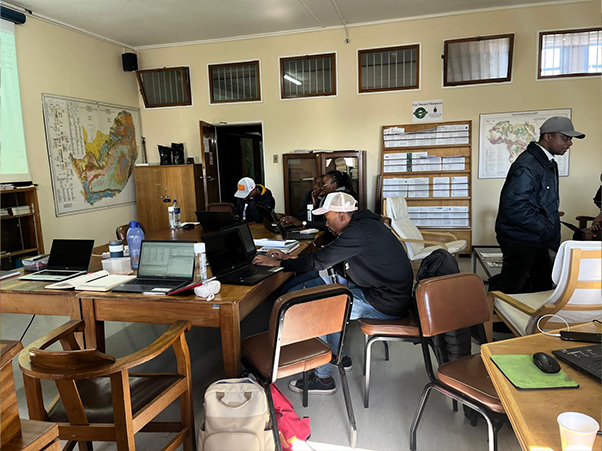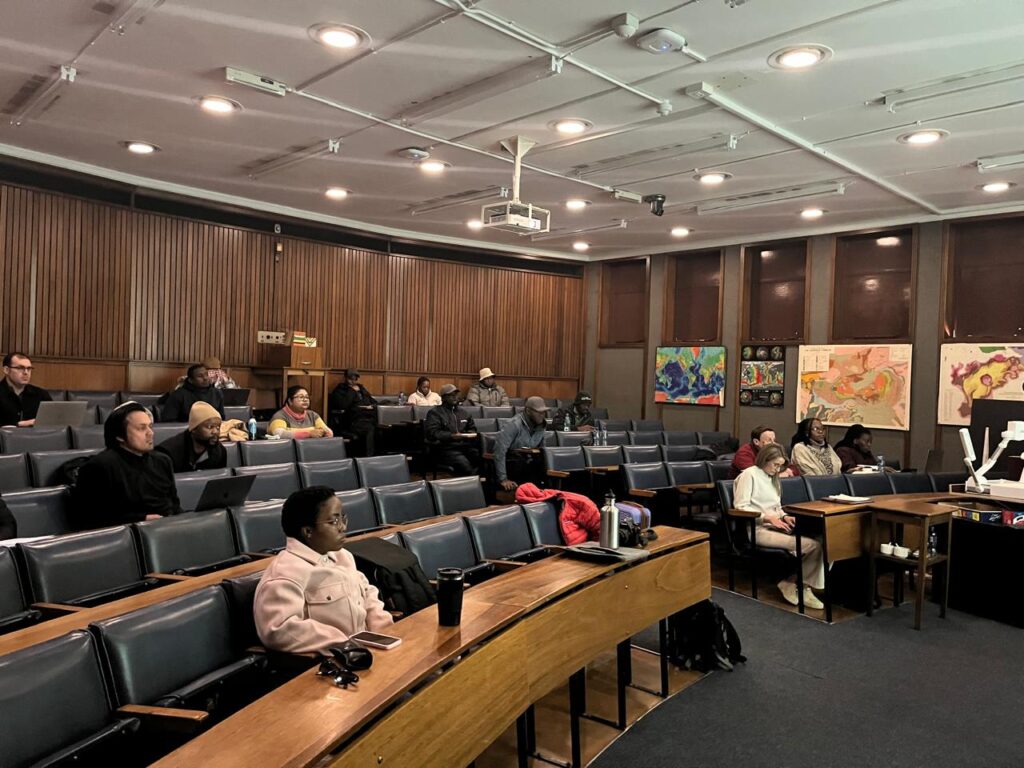Short Courses under Exp4Pred 2024
Introduction to Predictive Metallurgy
DSI-NRF CIMERA and Helmholtz Institute Freiberg for Resource Technology (HIF), at Helmholtz- Zentrum Dresden-Rossendorf under Exp4Pred,hosted a short course on Predictive Geometallurgy at the University of Witwatersrand School of Geosciences on 10-11 June 2024. The course was well attended and had 18 attendees on day 1 and 14 attendees on day 2. Dr Raimon Tolosana-Delgado, a Fellow Researcher from the Helmholtz Institute Freiberg for Resource Technology (HIF) at HZDR, started the short course with an introduction to Geometallurgy and discussed the characterisation tools of Geometallurgy. For the second half of the short course on day one, Dr Raimon Tolosana-Delgado discussed the Integrated geomet playground and finished Day 1 with orebody modelling.On Day 2, we resumed the short course. Dr Raimon Tolosana-Delgado continued the short course with a session on process modelling methods and particle-based process modelling and wrapped the short course with an engaging discussion with the participants.
Earth Observation Short Course
DSI-NRF CIMERA and Helmholtz Institute Freiberg for Resource Technology collaboratively hosted the Earth Observation course at the University of Witwatersrand on 10-11 June 2024 at the School of Geoscience and Seventeen participants, free of charge well, attended the short course. Dr Richard Gloaguen, lead scientist from the Helmholtz Institute Freiberg for Resource Technology, started the short course with the ‘Introduction to Earth Observation’ and spoke on data and formats, references (maps/projection), SAR and optical data, and a brief introduction to machine learning. Ms Yuleika Madriz Diaz, Research Engineer at Helmholtz-Zentrum Dresden-Rossendorf (HZDR), gave the ‘Introduction to drone magnetics principles, data processing, drone acquisitions and examples of applications’. Dr René Booysen, Researcher and Project Manager at HIF-HZDR, gave a talk on satellite data and spectroscopy, unpacking spectroscopy, satellite data, and basic processing methods (BR, SAM ).
We finished Day 1 of the short course with a practical on QGIS, and the participants learned to use QGIS for basic data processing. Dr Richard Gloaguen resumed Day 2 of the short course with a session on ‘3D Earth’ and focused his talk on three topics, namely GNNS basics, digital Earth, and Photogrammetry. Dr Moritz Kirsch gave the ‘Introduction to Hyperspectral Data’ focusing on Simaging, Corrections, and Applications, and closed off his talk with Hyperspectral geology applications, unpacking mine-face mapping, drill-core scanning, practical notes on acquisition, processing, and interpretation. We wrapped up the Earth Observation short course with a practical highlighting the compilation and analysis of hyperspectral drill-core datausing hycore and the application of hyperspectral scanning for mine-face mapping with hylite.




